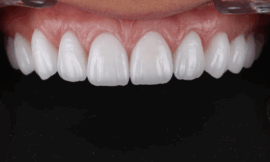If you’ve been treated for Lyme disease but are still feeling unwell weeks or months later, you’re not alone. Many individuals continue to experience symptoms long after completing antibiotic therapy. This lingering condition is known as Post-Treatment Lyme Disease Syndrome (PTLDS), and it’s a complex and often misunderstood aspect of chronic Lyme disease.
In this blog, we’ll explore what PTLDS is, how it affects your body and mind, the symptoms to watch for, and the holistic and medical support options available to help you live a fuller, healthier life.
What Is Post-Treatment Lyme Disease Syndrome?
Post-Treatment Lyme Disease Syndrome is a term used when symptoms of Lyme disease persist for six months or more after completing the standard course of antibiotic treatment. It’s different from an active infection—it’s not that the Lyme bacteria are still spreading, but rather that your body is continuing to deal with the aftermath of the illness.
PTLDS is part of what many refer to as chronic Lyme disease, a term used to describe the ongoing struggles some patients face, often involving fatigue, pain, and cognitive difficulties.
Common Symptoms of PTLDS
PTLDS symptoms can be similar to those of the initial Lyme infection but tend to be long-lasting and fluctuating. Common symptoms include:
- Severe fatigue that doesn’t improve with rest
- Muscle aches and joint pain, especially in the knees and elbows
- Brain fog, memory problems, and difficulty concentrating
- Mood changes, including depression and anxiety
- Sleep disturbances
- Tingling, numbness, or other neurological symptoms
These symptoms can interfere with daily life, making it difficult to work, socialize, or maintain routines.
Why Do Symptoms Persist?
There is no single explanation for PTLDS, but researchers believe several factors may contribute:
- Autoimmune response: The immune system may continue to attack healthy tissue after the infection is cleared.
- Nerve damage: Lyme bacteria can affect the nervous system, and recovery from this damage can take time.
- Inflammation: Persistent inflammation may cause ongoing pain and fatigue.
- Co-infections: Some tick bites carry more than one pathogen, complicating recovery.
- Residual toxins or bacterial fragments: The body may still be reacting to leftover bacterial proteins.
The Emotional Impact of PTLDS
Living with chronic symptoms can lead to emotional strain, particularly when others don’t understand or believe your condition. Many people with PTLDS experience:
- Frustration from lack of improvement
- Isolation from friends or family who may not understand
- Fear about long-term health
- Loss of identity if work or hobbies are affected
If you’re experiencing these feelings, know that they are valid—and you’re not alone.
Diagnosing Post-Treatment Lyme Disease Syndrome
There is no definitive test for PTLDS. Diagnosis is typically based on:
- A known history of Lyme disease
- Completion of appropriate antibiotic treatment
- Persistent symptoms that cannot be explained by another condition
Because symptoms overlap with those of chronic fatigue syndrome, fibromyalgia, or autoimmune disorders, it’s important to work with a Lyme-literate healthcare provider who can accurately assess your condition.
Holistic and Medical Support for PTLDS
There is no one-size-fits-all cure, but many people find relief through comprehensive care that addresses physical, emotional, and mental health. Here are supportive approaches:
1. Functional Medicine & Holistic Practitioners
Practitioners who specialize in chronic illness can help address underlying inflammation, gut health, and immune support.
2. Nutrition & Supplements
An anti-inflammatory diet and targeted supplements can ease symptoms.
- Omega-3s (fish oil)
- Magnesium (for muscle pain and sleep)
- Vitamin D and B-complex
- Herbal support like cat’s claw, ashwagandha, or turmeric
(Always consult a professional before starting new supplements.)
3. Physical Therapies
Gentle movement supports circulation, detox, and pain relief.
- Yoga or tai chi
- Stretching
- Massage therapy
- Acupuncture
4. Mental Health Support
Counseling or therapy can help you process emotions and build coping strategies. Mindfulness practices like meditation and journaling may also bring relief.
5. Pacing & Rest
Balance is key. Avoid overexertion and give your body time to heal. Keeping a symptom journal can help identify triggers and track progress.
Final Thoughts
Post-Treatment Lyme Disease Syndrome is a very real and life-altering condition for many people. While traditional medicine may fall short in offering quick fixes, combining medical insight with holistic wellness practices can make a meaningful difference.
If you’re still struggling after Lyme treatment, don’t give up hope. With time, personalized care, and a supportive community, healing is possible—even from the long shadows of chronic Lyme disease.


